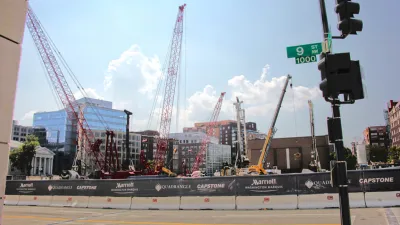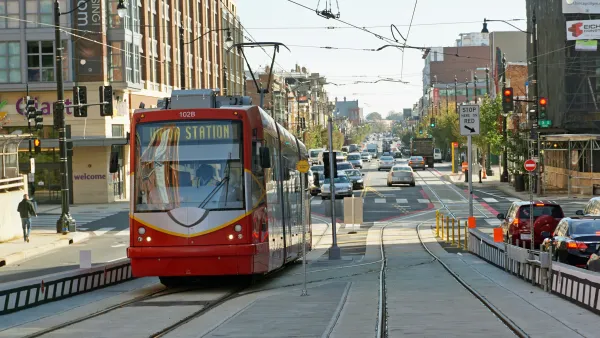A look back at Washington, D.C.'s most recent Comprehensive Plan reveals lessons for how the city should plan for the future next time it undertakes a comprehensive planning process.

The Greater Greater Washington site is undertaking a roundtable, of sorts, to review Washington, D.C.'s 2005 Comprehensive Plan. Each week, Greater Greater Washington readers are discussing the section and summarizing their discussion on the site.
David Whitehead summarizes the most recent discussion, which centered on the comp plan's priority on enabling an inclusive city.
DC's 2005 Comprehensive Plan began with a strong and encouraging vision: building a growing and inclusive city. Just one chapter later, it lists a set of contradictory guiding principles that waffle between preserving the status quo and promoting inclusive growth. Oops.
To back that argument, Whitehead digs into the plan's section on the guiding principles for growth. Readers notices that many of the guiding principles employ contradictory terms—antonyms even.
Corey Holman noticed that many of these statements use "near antonyms," like "Maintaining and enhancing the mix of housing types" (Principle #3) or "ensure that neighborhood character is preserved and enhanced" (Principle #8). He wrote, "How can something be maintained or preserved while also being enhanced? It's that wishy-washy language that allows people to see what they want in this document, instead of laying out a clear vision.
The lesson of the post is that next time around, the District will require a comp plan that makes strong statements about its principles—especially since the District is growing much faster than the 2005 plan anticipated.
FULL STORY: 33 pages after calling for a growing and inclusive city, DC's Comprehensive Plan muddies that vision

National Parks Layoffs Will Cause Communities to Lose Billions
Thousands of essential park workers were laid off this week, just before the busy spring break season.

Retro-silient?: America’s First “Eco-burb,” The Woodlands Turns 50
A master-planned community north of Houston offers lessons on green infrastructure and resilient design, but falls short of its founder’s lofty affordability and walkability goals.

Delivering for America Plan Will Downgrade Mail Service in at Least 49.5 Percent of Zip Codes
Republican and Democrat lawmakers criticize the plan for its disproportionate negative impact on rural communities.

Test News Post 1
This is a summary

Test News Headline 46
Test for the image on the front page.

Balancing Bombs and Butterflies: How the National Guard Protects a Rare Species
The National Guard at Fort Indiantown Gap uses GIS technology and land management strategies to balance military training with conservation efforts, ensuring the survival of the rare eastern regal fritillary butterfly.
Urban Design for Planners 1: Software Tools
This six-course series explores essential urban design concepts using open source software and equips planners with the tools they need to participate fully in the urban design process.
Planning for Universal Design
Learn the tools for implementing Universal Design in planning regulations.
EMC Planning Group, Inc.
Planetizen
Planetizen
Mpact (formerly Rail~Volution)
Great Falls Development Authority, Inc.
HUDs Office of Policy Development and Research
NYU Wagner Graduate School of Public Service





























